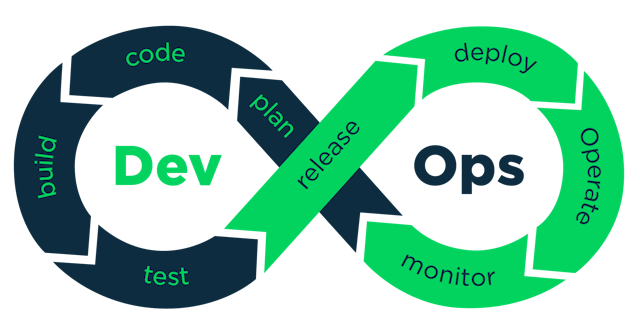DevOps--Bridging the Gap Between Development and Operations
Posted By Coding_Dynasty a month ago
Reading Time: 3 Minutes

In the ever-evolving landscape of software development, DevOps has emerged as a crucial methodology that bridges the gap between development and operations teams. By fostering collaboration, automation, and continuous improvement, DevOps enables organizations to deliver high-quality software faster and more efficiently. In this article, we'll explore the key principles, practices, and benefits of DevOps.
What Is DevOps?
DevOps is a cultural and technical movement that emphasizes collaboration, communication, and automation across the entire software development lifecycle. It breaks down silos between development (Dev) and IT operations (Ops), encouraging them to work together seamlessly. Here are some core principles of DevOps:
-
Continuous Integration (CI):
- Developers frequently integrate their code into a shared repository. Automated tests run to catch issues early.
-
Continuous Delivery (CD):
- The process of automatically deploying code changes to production or staging environments. CD ensures that software is always in a deployable state.
-
Infrastructure as Code (IaC):
- Treating infrastructure (servers, networks, databases) as code. IaC allows for version-controlled, repeatable infrastructure provisioning.
-
Automated Testing:
- Writing automated tests for code, infrastructure, and security. This ensures consistent quality and reduces manual testing efforts.
-
Monitoring and Logging:
- Real-time monitoring of applications and infrastructure. Logs provide insights into system behavior and help troubleshoot issues.
Benefits of DevOps
-
Faster Time-to-Market:
- DevOps practices enable rapid development, testing, and deployment. Features reach users faster, enhancing competitiveness.
-
Improved Collaboration:
- Developers and operations teams collaborate closely, leading to better understanding and alignment of goals.
-
Reduced Risk:
- Automated testing and continuous monitoring catch issues early, minimizing the risk of production failures.
-
Efficient Resource Utilization:
- IaC allows efficient scaling and resource allocation. Infrastructure changes are predictable and reproducible.
-
Enhanced Customer Experience:
- Faster bug fixes, feature releases, and seamless updates lead to a better user experience.
Challenges and Best Practices
-
Cultural Shift:
- DevOps requires a mindset change. Encourage open communication and shared responsibility.
-
Toolchain Selection:
- Choose tools that fit your organization's needs. Popular choices include Jenkins, GitLab, Docker, and Kubernetes.
-
Security Considerations:
- Integrate security practices into the DevOps pipeline. Regularly scan for vulnerabilities.
-
Monitoring and Feedback Loops:
- Continuously monitor performance and gather feedback from users to drive improvements.
DevOps is not just about tools; it's a philosophy that fosters collaboration, agility, and efficiency. Embrace DevOps practices to stay competitive in today's fast-paced software world. 🚀